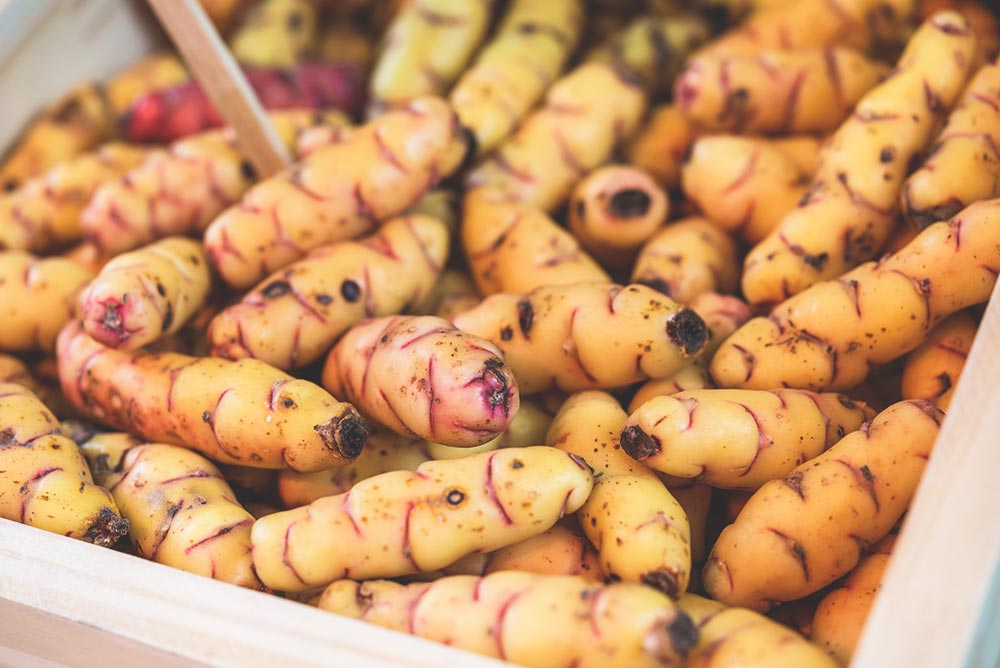Oca tubers are the potato-like tuberous vegetables of the oca plant (oxalis tuberosa).
They’re a small vegetable that comes in a variety of colours: red, yellow, orange, purple, pink and even ‘apricot’. They have a chubby finger-like shape with a very recognisable bobbly skin.
These tubers are known throughout the world by a variety of names, including:
- Oca de Peru
- New Zealand yam
- Uqa (in the Andes)
- Cubio (in Spanish speaking countries)
- Apiña (in Bolivia and Peru)
- Macachin (in Venezuela)
- Truffette acide (in France)
They were originally grown in the high Andes and are a very popular variety of vegetable in South America. In fact, they were a staple food of various ancient cultures throughout the continent.
Oca tubers were brought to Europe in 1830 to be a competitor of the (already well-known) potato. But the potato beat off the competition and the oca tuber never really caught on in any great scale.
30 years later they were also introduced to New Zealand, where there was a very different reaction. They were adopted as a firm favourite and are still hugely popular today (and known simply as ‘yams’).
What do oca tubers taste like?
Unlike potatoes, oca tubers can be eaten both raw and cooked.
When they’re raw, they have a fresh lemony flavour with a crisp, crunchy texture similar to that of a carrot. The skin is edible too and can be left on when raw. Slice them up into a salad to add some fresh zest.
When they’re cooked, the lemony flavour disappears and the tubers have a nuttier taste. You can cook them in much the same way as a potato — boiled, baked, fried, grilled or added to a soup or winter stew.
Eat variety differs in its nutritional content, but generally they’re a great source of carbohydrates, vitamin C, iron and potassium, as well as being a source of protein.
When are oca tubers in season?
The oca plant will begin to form tubers as the days shorten and the temperature drops — in other words, in the autumn.
The tubers will grow in size throughout the autumn, so the longer the tubers are left in the soil, the better.
Typically, the best time to harvest the tubers is after the frost has destroyed all of the above-ground foliage. In the Northern Hemisphere this is usually in late November and December, but in South America it’s from about March/April time.
Like the potato, the oca tuber can be stored quite happily for several months, so you’ll have access to them for an extended period after harvest.
Where can I buy oca tubers?
First Choice stock these tubers as soon as they’re available, so give our team a call or send us a message if you would like to ask about sourcing this product for your restaurant.
